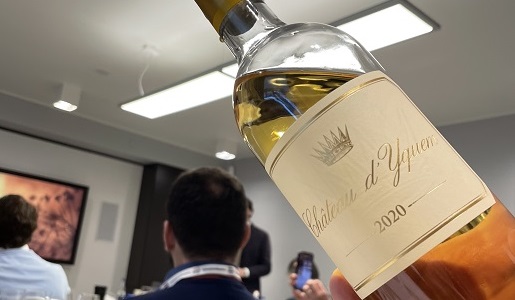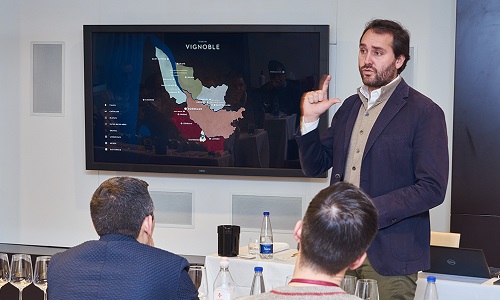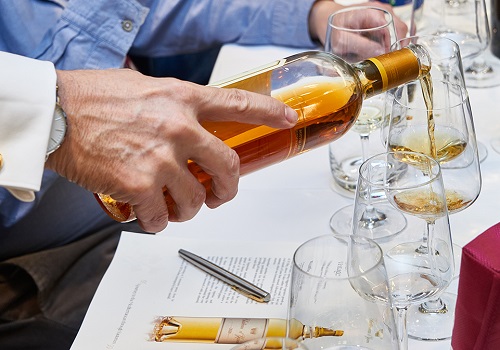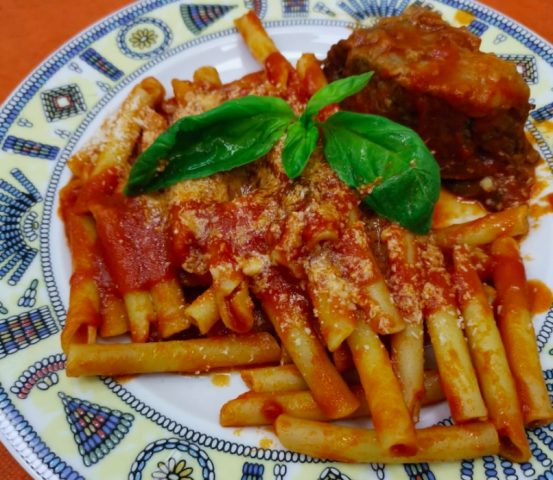Yquem and the world’s smallest wine maker

To be able to drink Château d'Yquem and listen to the words of those who live it every day, like Lorenzo Pasquini, director of the Château, is a great privilege, never to be taken for granted.

 Here we could go on for hours, I will be brief and ruthless if need be, but how can we not talk about her, the noble mold that makes everything unique and special. It's all played out on a razor's edge, on one side acid rot and the end of the game, on the other side the game gets interesting. Falling on one side or the other is decisive, at Château d'Yquem it happens that you fall right and it is almost always possible to produce the precious nectar. Mold development is favored by the humid climate, its evolution to the noble, hence larval, form depends on constant ventilation and consequent dry weather. Mold does not develop evenly, which is why several steps must be taken to pick the cluster at the right time. This is where the obviously experienced grape pickers come in. About 100 people at work each year, with an average age of 63. All local, all former vignerons, sons of vignerons to complete the terroir picture. They work hard during the harvest relying solely on experience, observation and olfactory analysis. Hard work paid off by the fact that, it is scientifically established, thanks to the intervention of mold in larval form, up to +50 aromatic precursors can be found in the grapes compared to the non-botrified version. Mold also literally dries out the berries by naturally concentrating their contents and sugars and promoting the development of new components. The contribution then of Botrytis c. obviously does not end in the countryside but continues in the course of winemaking. Characteristic aromas and chemical characteristics of the must to be reckoned with in fermentation are the hallmark of this small winemaker that cannot be done without.
Here we could go on for hours, I will be brief and ruthless if need be, but how can we not talk about her, the noble mold that makes everything unique and special. It's all played out on a razor's edge, on one side acid rot and the end of the game, on the other side the game gets interesting. Falling on one side or the other is decisive, at Château d'Yquem it happens that you fall right and it is almost always possible to produce the precious nectar. Mold development is favored by the humid climate, its evolution to the noble, hence larval, form depends on constant ventilation and consequent dry weather. Mold does not develop evenly, which is why several steps must be taken to pick the cluster at the right time. This is where the obviously experienced grape pickers come in. About 100 people at work each year, with an average age of 63. All local, all former vignerons, sons of vignerons to complete the terroir picture. They work hard during the harvest relying solely on experience, observation and olfactory analysis. Hard work paid off by the fact that, it is scientifically established, thanks to the intervention of mold in larval form, up to +50 aromatic precursors can be found in the grapes compared to the non-botrified version. Mold also literally dries out the berries by naturally concentrating their contents and sugars and promoting the development of new components. The contribution then of Botrytis c. obviously does not end in the countryside but continues in the course of winemaking. Characteristic aromas and chemical characteristics of the must to be reckoned with in fermentation are the hallmark of this small winemaker that cannot be done without.
.jpg)
I conclude with a few remarks about the future of Yquem in the latest released 2020 vintage. A vintage considered not particularly typical but representative. The first of organic conversion for the Château. The harvest began September 14, ended October 29 (due to rains) and took place in 5 passes. As far as the winery is concerned we are witnessing a more modern and futuristic vision of Yquem, statements that I allow myself to make always and only on tiptoe, let me be clear. The "recipe" in the cellar has changed slightly with a view to providing an increasingly integral, long-lived product with longer-lasting primary aromas and reduced SO2 content. All this has also been made possible by intervening on the stay in wood. Shorter than in the past and using woods with finer grain and lighter and lighter toastings. Translated into practice, less racking and lower oxygenation (and oxidation). Clearly, the vintage component is always decisive; it is she who decides whether this wine can be made or not. From there on, the human being's job is to go along with the raw material, occasionally making his or her own contribution in terms of innovation.
Being able to drink Château d'Yquem and listen to the words of those who live it every day is a great privilege, never to be taken for granted. I try to convey what I experienced with the wine description you can read by clicking on the name:

 Italiano
Italiano










